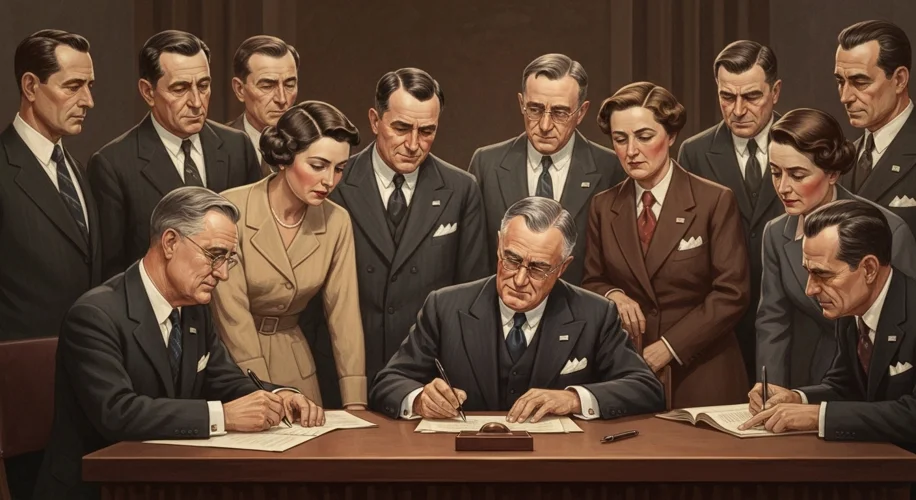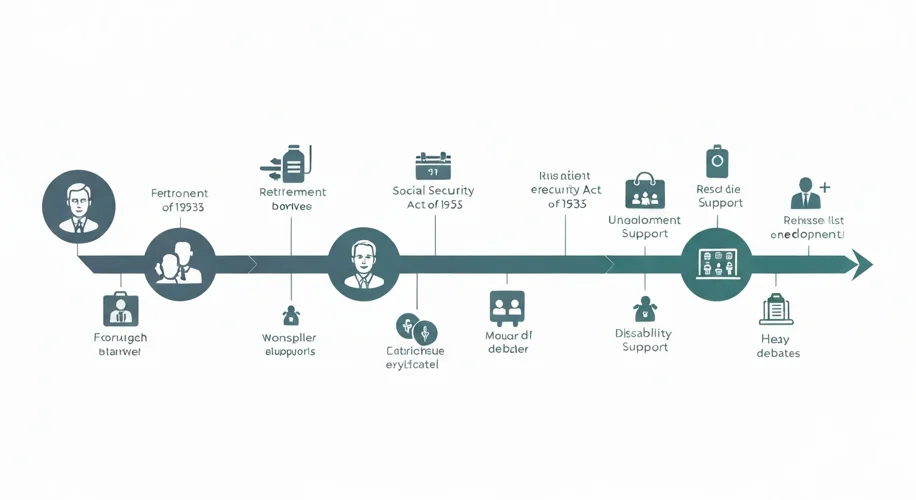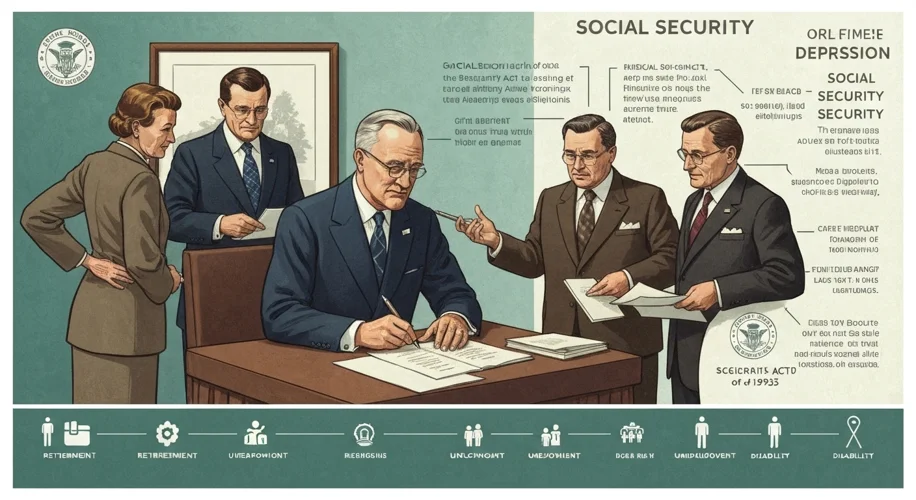The year is 1935. The United States is a nation reeling from the Great Depression. Millions are unemployed, families are starving, and the elderly face destitution with no safety net. In this era of profound despair, a transformative piece of legislation, the Social Security Act, was signed into law. It was more than just a bill; it was a beacon of hope, a promise that no American should be left to face old age or unemployment entirely alone.
A Nation on its Knees: The Genesis of Social Security
The economic devastation of the Great Depression, beginning in 1929, stripped away the livelihoods and savings of countless Americans. Banks failed, businesses shuttered, and unemployment soared to unprecedented levels, reaching nearly 25% at its peak. The traditional social structures, often reliant on family or local charity, were overwhelmed. The elderly, in particular, were vulnerable. Many had worked their entire lives but found themselves with no means to support themselves in their later years. This widespread suffering created a fertile ground for radical change, a demand for government intervention that had been largely absent before.
President Franklin D. Roosevelt, a charismatic leader who had promised a “New Deal” for the American people, recognized the urgent need for a fundamental shift in social policy. He understood that the nation’s economic recovery and social stability were intrinsically linked. The idea of a federal safety net, while debated for decades, gained critical momentum in this crisis. Opponents argued that such a system would foster dependency and infringe upon individual liberty, while proponents championed it as a necessary measure to protect the vulnerable and stimulate the economy.
The Birth of a Safety Net: Key Provisions of the 1935 Act
The Social Security Act of 1935 was a complex piece of legislation with several key components, though its most famous provision established a system of old-age benefits. It created:
- Old-Age Insurance: This was the cornerstone of the act. It established a federal retirement pension system funded by contributions from workers and employers. Workers paid a small percentage of their wages, and employers matched that contribution. This money was pooled, and upon reaching a certain age (initially 65), eligible individuals would receive monthly payments. This was revolutionary, offering a measure of financial security for life.
- Unemployment Compensation: The act also provided federal-state grants to establish unemployment insurance programs. This offered temporary financial assistance to workers who lost their jobs through no fault of their own, helping to cushion the blow of job loss and prevent immediate destitution.
- Aid to Dependent Children and Families: It offered assistance to families with dependent children, particularly those in need, and aid to individuals with disabilities. This aimed to support vulnerable populations beyond the elderly and unemployed.

The implementation of these programs was a monumental undertaking. It required establishing a vast administrative infrastructure, collecting data, and educating a populace unfamiliar with such federal involvement. The initial monthly payments were modest, reflecting the nation’s strained financial situation and the pioneering nature of the program. For many, however, it represented the first time they could envision a future free from the constant specter of poverty in their old age.
Evolving with the Times: Adjustments and Challenges
The Social Security Act was not a static document. It has been amended and expanded numerous times over the decades, adapting to changing economic conditions, demographic shifts, and societal needs. For instance, the original act excluded many agricultural and domestic workers, groups that were disproportionately composed of African Americans and women. Subsequent amendments gradually broadened coverage, aiming for greater inclusivity.
The system has faced significant challenges, particularly regarding its long-term financial sustainability. As the population aged and life expectancies increased, the ratio of workers contributing to the system versus beneficiaries receiving benefits began to shift. This demographic reality has fueled ongoing debates about funding mechanisms, benefit levels, and the program’s future. Discussions about raising the retirement age, adjusting contribution rates, or exploring alternative funding models have become recurrent themes in American political discourse.

The program’s success, however, is undeniable. Social Security has lifted millions of seniors out of poverty, providing a stable income that allows them to live with dignity. It acts as an automatic economic stabilizer, injecting money into the economy during downturns. Furthermore, it has become a foundational element of American social policy, deeply ingrained in the fabric of the nation’s retirement and welfare system.
A Legacy of Security, A Future of Debate
The Social Security Act of 1935 was a watershed moment in American history. It represented a profound commitment to collective responsibility and the idea that a wealthy nation has a moral obligation to protect its citizens from the harshest consequences of economic misfortune. While debates about its future funding and structure continue, its legacy as a critical safety net, born out of the crucible of the Great Depression, remains secure. It stands as a testament to the nation’s capacity for change and its enduring pursuit of a more just and secure society for all.

